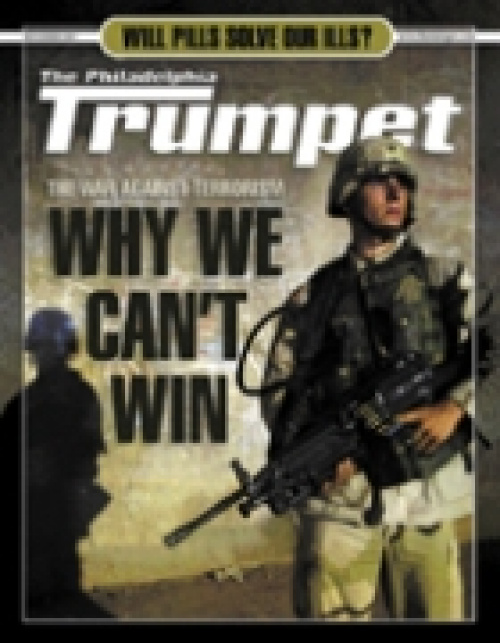Iron and Clay
Who can accurately predict the future of a Europe that is split down the middle and side to side with every effort toward further integration seemingly only augmenting the chaos? Europe is rapidly approaching its next great crossroads. It cannot continue indefinitely as it is—a gigantic rumbling conglomerate that could be shot in the foot and crippled by any one of its dissenting parts.
It would be hard to overstate the extent of Europe’s divisions. They range across the spectrum—political, historical, economic, philosophical and religious. Small countries look suspiciously upon the large; the poor are mistrustful of the rich; the accession countries are wary of the six founding members; those within the eurozone look down on those without.
Earlier in the year, disputes erupted over the war in Iraq, with every former Soviet-bloc country supporting it, much to the chagrin of their western soon-to-be “big brothers.” Developments in military and defense integration, supported largely by Germany and France, are hotly contested by some countries that fear an EU military will challenge the U.S.-led nato.
The setting up of an EU president and EU foreign minister, and the reduction to 15 (from 20) full-time commissioners that will represent the soon-to-be 25 members of the EU, are controversial points now included in the draft EU constitution. They are opposed by many of the smaller countries, which see their voices and political weight slipping away because of these proposals.
Any constitutional treaty must currently be approved unanimously by the enlarged EU. It is not difficult to foresee the problems inherent in this requirement.
In a veiled threat to Britain, the real thorn in the EU’s side, the office of the European Commission president foreshadowed the prospective outcome of the EU’s present difficulties: “A spokesman for Romano Prodi, European Commission president, admits it will be a ‘huge challenge for our communication efforts’ to sell the [constitution]. If it is not ratified, Europe faces the messy choice of grinding to a halt or possibly having to expel one of its members” (Financial Times, London, Sept. 17).
Sweden recently made waves when it rejected, by a clear majority, a referendum to replace its national currency with the euro. The Danes have also rejected the euro. Over 70 percent of Britons are against it. And who could forget the double arm-twisting to get the Irish to accept the European currency?
What is the future of this shaky European combine? “The EU faces a tough choice. It could either let the founder members cooperate ever more closely, while others stay outside the process; or it could simply move at the speed of the slowest” (ibid.). We can be sure that it will not be the latter.
